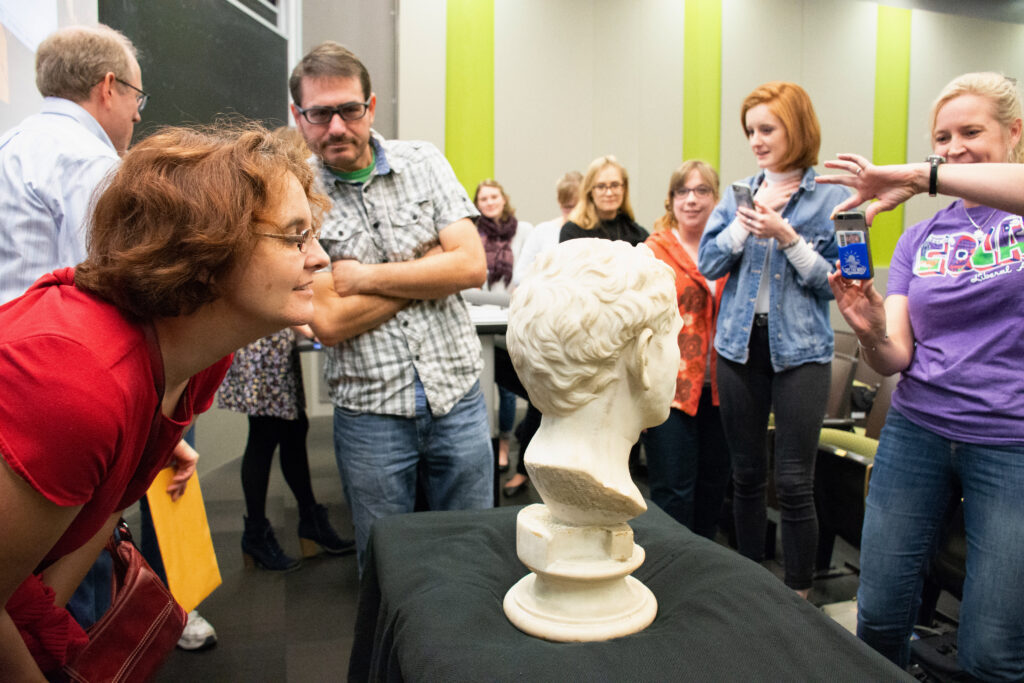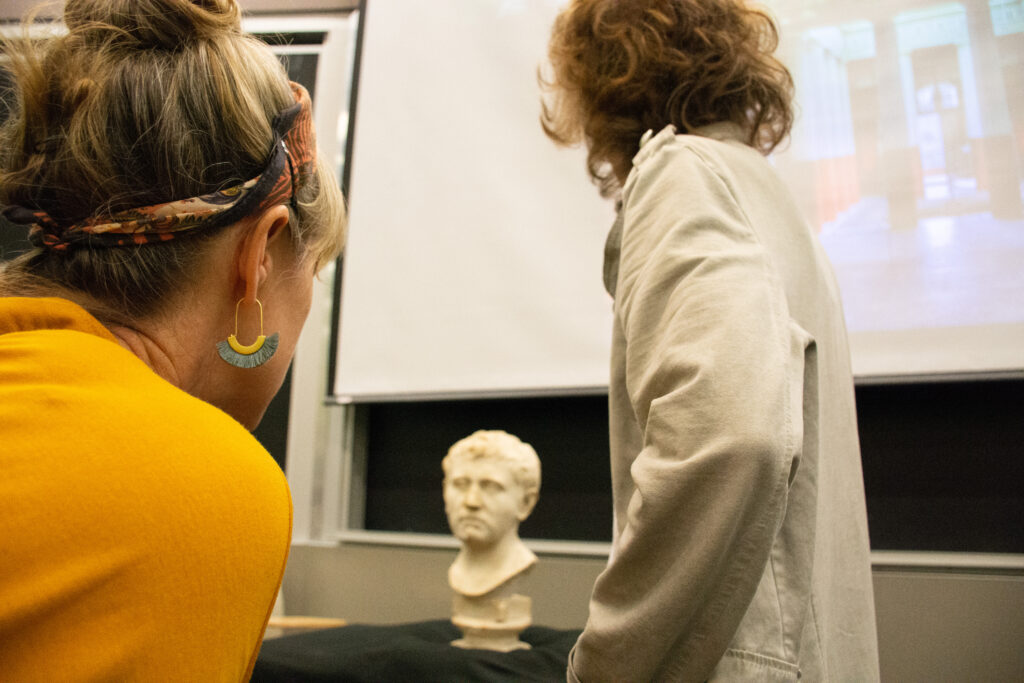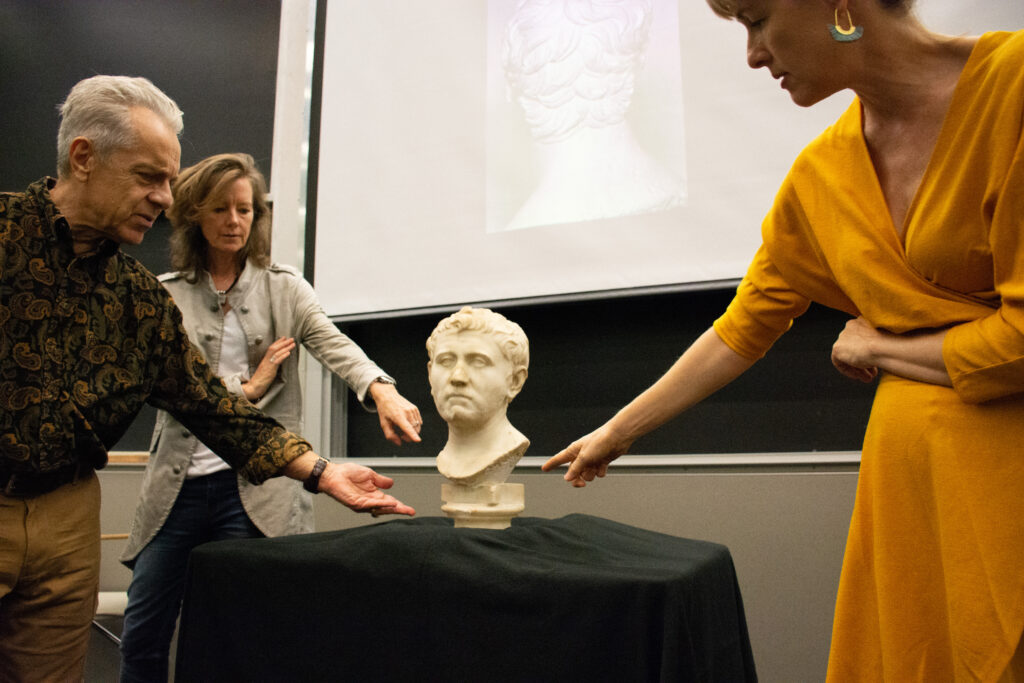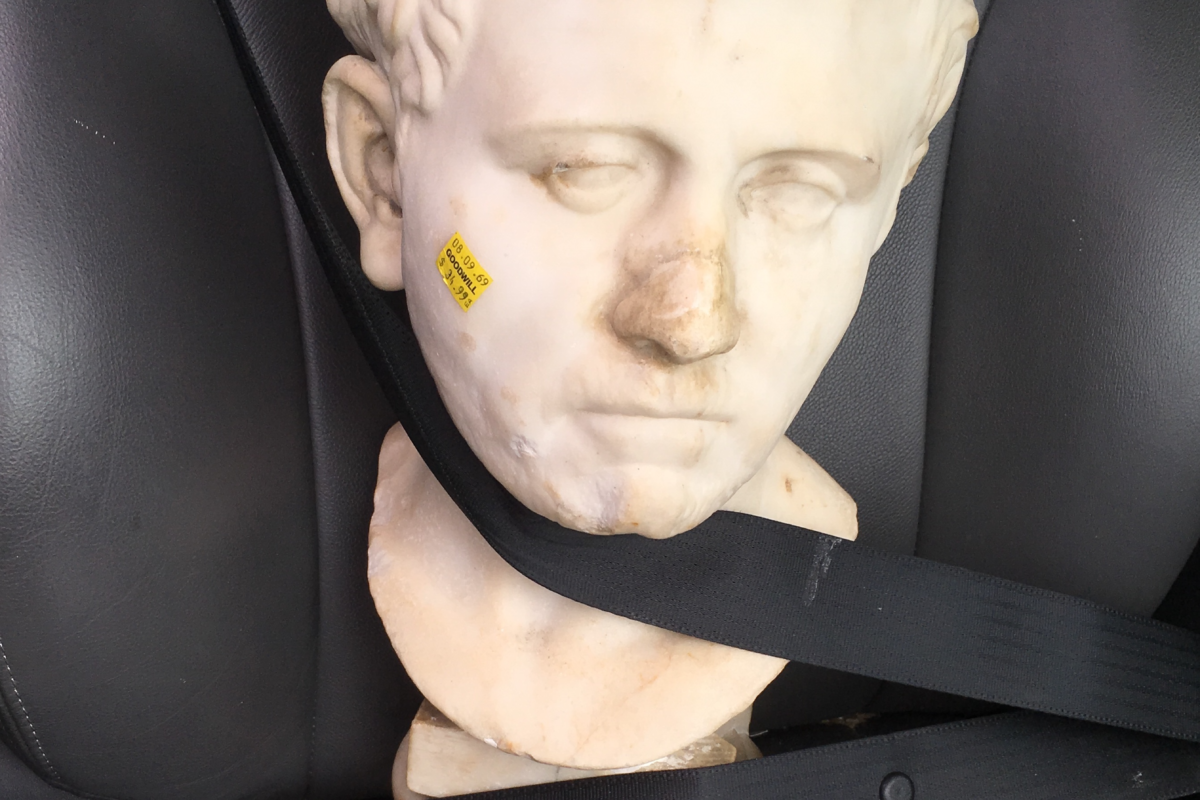Ancient Roman bust bought for $34.99 at Goodwill gets the star treatment
In October of 2018, Austin-based antiques dealer Laura Young purchased a marble bust at Goodwill for $34.99. Suspecting that the sculpture might be a much greater find, Young reached out to The University of Texas at Austin professors Rabun Taylor (Classics), Stephennie Mulder (Art & Art History), and Penelope Davies (Art & Art History), to understand more about the piece. As it turns out, the artifact was indeed a find dating to ancient Rome, approximately the late first century B.C. or early first century A.D.
The UT Austin professors hosted a special session of Antiquities Action, a group of UT students, faculty, and staff committed to raising awareness about cultural-heritage destruction and illicit trafficking of antiquities worldwide. They brought aboard an additional art historian, John R. Clarke (Art & Art History), to establish the sculpture’s authenticity. Young had already ventured a guess, in conversation with a Sotheby’s auction-house expert, at how the bust ended up in the United States: it may have been taken by an American service member during World War II from the town of Aschaffenburg. The Sotheby’s expert had found original photographs of the bust from the 1920s in the photo archives of the German Archaeological Institute indicating that it was located in that German town where, in 1840, Ludwig I of Bavaria had built a full-scale model of a house from Pompeii, called the Pompejanum, to house his collection of antiquities.
Taylor presented the history of the Pompejanum to the session. This riverside villa was the brainchild of the Bavarian King Ludwig I, whose collection included many Roman marble busts among a vast collection of Greek and Roman antiquities. The Allies heavily bombarded Aschaffenburg in the winter of 1945, and after their advancement the city came under American control. It was probably this bombing campaign and subsequent American occupation that led to the bust finding its way to the United States and to Texas. Looting, or the taking of souvenirs, was common during WWII, and, although we often associate looting with German troops, American troops also participated. An American service member likely brought the bust back with them to Texas.



Clarke, Davies, and Mulder identified specific stylistic details of the bust; Davies proposed a tentative origin in the Triumviral period, perhaps in the era of Roman military leader Sextus Pompey (67 B.C.–35 B.C.). Dating an artifact is a messy, subjective process, and watching these experts examine the sculpture in real time was a unique opportunity for UT Austin students in attendance.
The sculptural treatment of the subject’s hair was of special focus, since Roman portraiture is characterized by stylistic cycles alternating between a more naturalistic look and an idealized, classical one. The sculptor’s choice between the two styles was often a strategic move to align credibility and authority with that of predecessors who used the same style. The UT professors noted that the hair was not very ordered or systematized, as it was in the Augustan period (27 B.C.–A.D. 14), suggesting a date in the earlier Triumviral period.
The portrait may depict one of the sons of Pompey the Great, Sextus’ father and a Roman general and statesman who aligned himself with Caesar before later clashing with him during a civil war. This artifact has the remnants of what was once a traditional beard, which may further indicate that it was depicting one Pompey’s sons wearing a beard of mourning for his late father.
Mulder later put Young in touch with Leila Amineddoleh, a New York City attorney specializing in art law, to pursue the ethical route to the looted antiquity’s return to its rightful owners. Amineddoleh negotiated a settlement with the Pompejanum in which the San Antonio Museum of Art will keep the sculpture on display until May 2023 before its eventual return to Germany.
